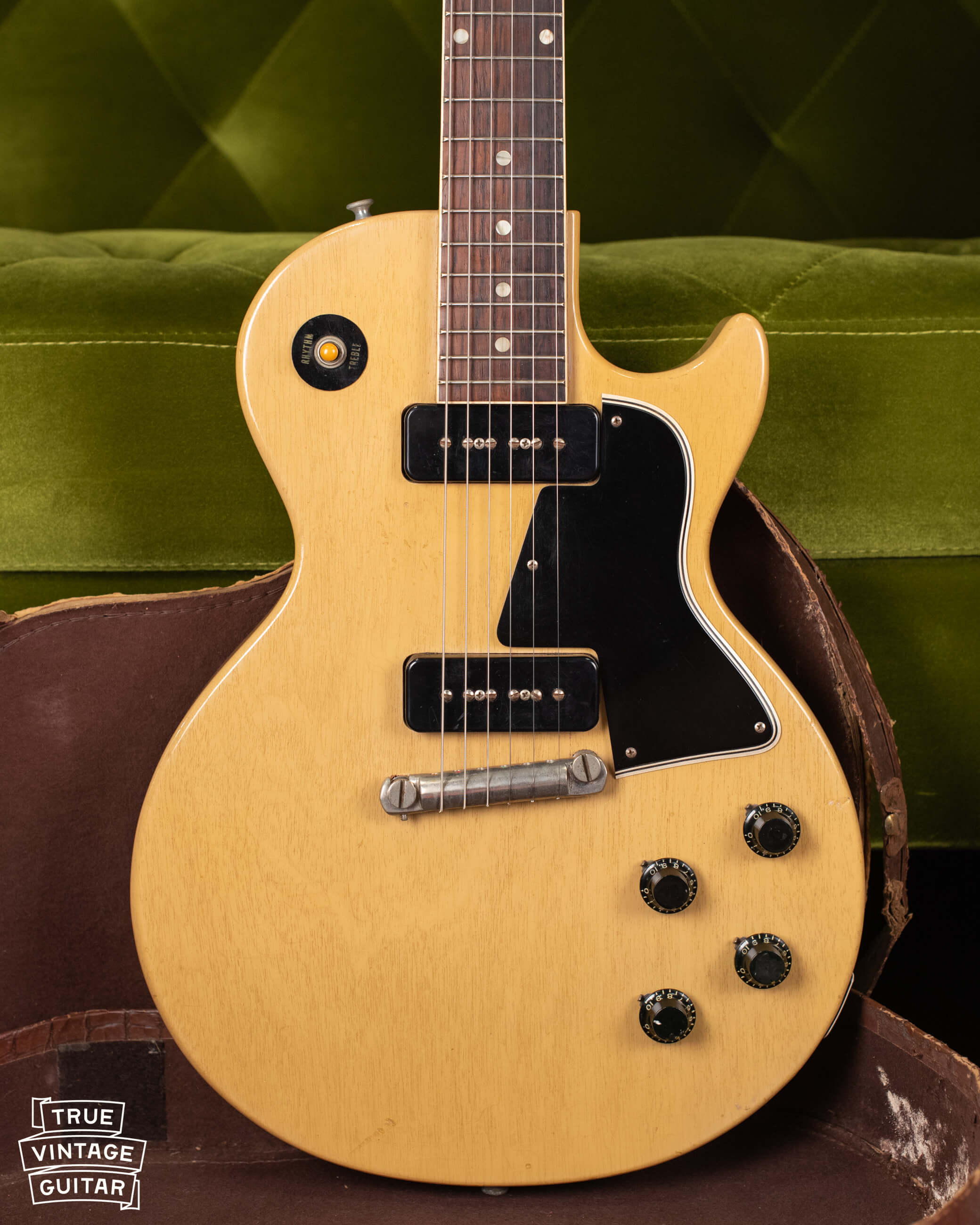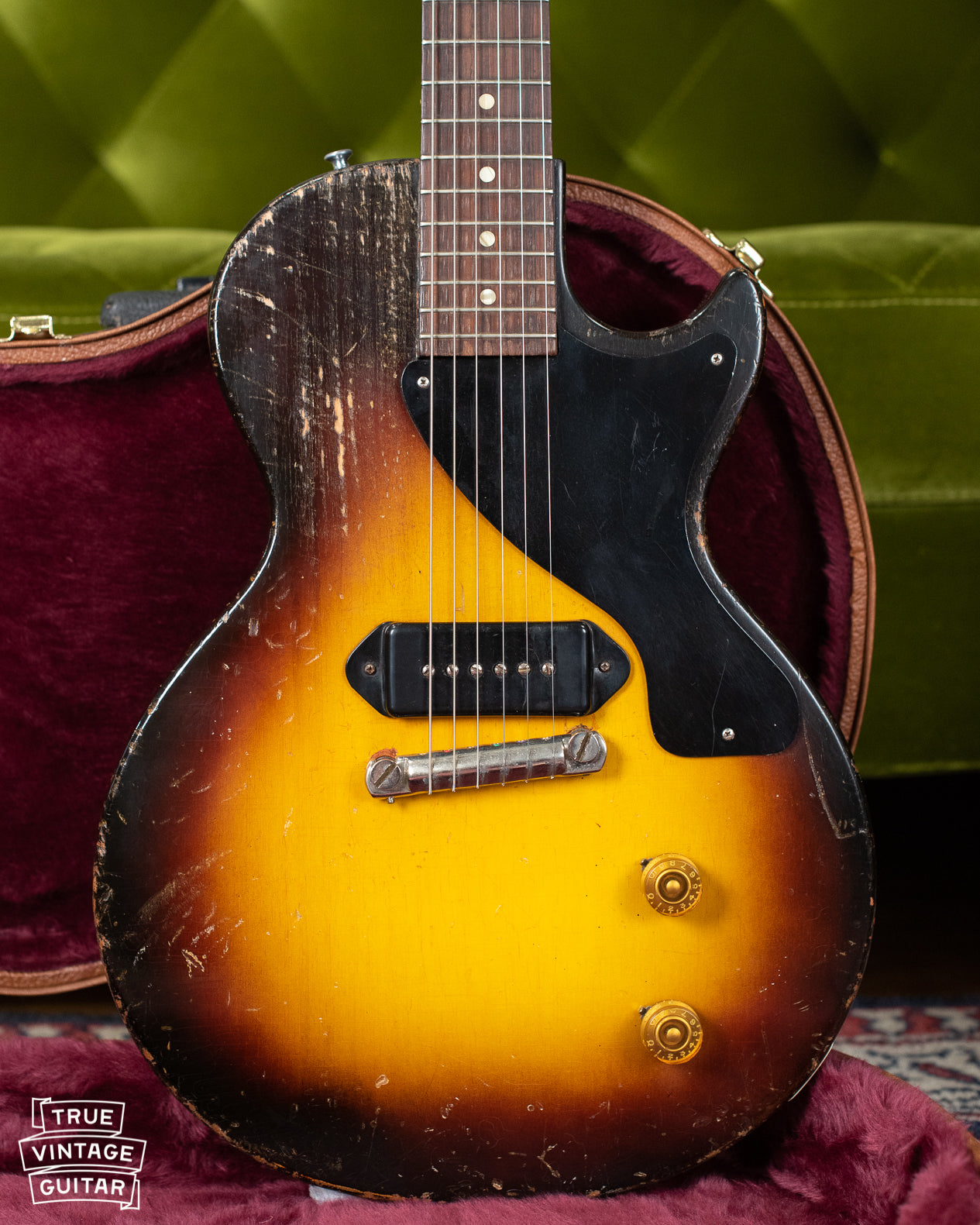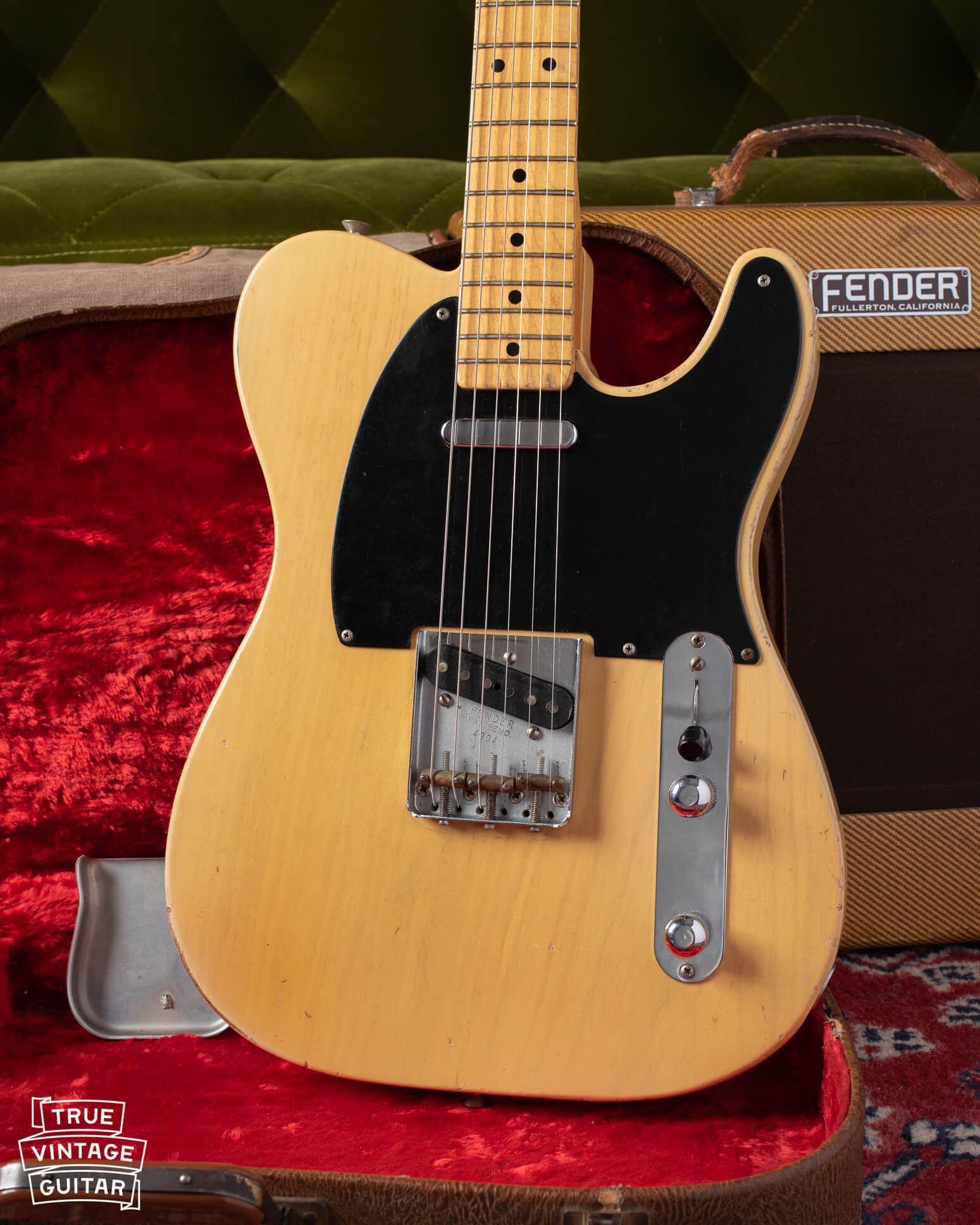This Gibson Les Paul Special 1956 in original yellow finish that Gibson called Limed Mahogany came through the shop earlier this year. It's a very nice example of 1956 era Gibson craftsmanship and was a spectacular playing guitar. I personally loved the pictures of the guitar with its original owner. I loved playing this guitar, but a friend of mine loved it as well and I sold it to him. I've missed it ever since and would like to find another like it. You can contact me here to sell a Gibson guitar.
The story of this Gibson Les Paul Special 1956 is told in the picture of the original owner that came with the guitar. I purchased this Gibson from the widow of its original owner. The photo with the original owner shows him at the kitchen table playing his Les Paul while his mother holds a birthday cake. His widow and I suspect that the guitar was his birthday present. What a lucky kid!
Here is a great book on Les Paul guitars: The Early Year of the Les Paul Legacy.

How to date a Gibson Les Paul 1956
Knowing how to date a Les Paul guitar from the 1950s is more than just checking the serial number. Gibson serial numbers are not an easy way to date Les Paul guitars because they are style specific, not necessarily sequential, and were repeated multiple times throughout the 1950s, 1960s, and 1970s. Gibson serial numbers are only effective to date a Les Paul if the other important specifications support the year indicated by the serial number. Gibson was using block font ink stamp under the finish during the 1950s that's found on the back of the headstock. The first digit indicates the last digit of the year followed by four or five additional digits intended to be sequential. The serial number of this Gibson Les Paul Special begins with 6 and is followed by 5 digits which would indicate that it was made in 1956.
You can contact me here if you'd like additional help with how to date a Gibson Les Paul.

The next place to look for clues on finding the year of a Gibson Les Paul would be the overall features. The guitar in the pictures is a solid body electric with single cutaway, the serial number is ink stamped, there is no "Made in USA" stamp, there is no neck volute. The Gibson Les Paul Special was made with a single cutaway body style from 1955 until 1958 when it transitioned to a double cutaway body style. Gibson serial numbers were ink stamped on the back of the peghead until 1961. A Made In USA stamp was applied to all Gibson guitars under the serial number in 1970. All of the features on this Les Paul support 1956 as the year that it was manufactured.
The next place to look for how to date a Gibson Les Paul would be the potentiometer codes. The potentiometers are the variable resistors that allow a player to control the volume and tone of each pickup's signal sent to the amplifier. The codes are found on the back of the guitar under the large plastic plate. The potentiometer codes on Les Paul guitars in the 1950s are usually found on the side of the potentiometer and can be difficult to read. They will tell us what manufacturer made it, the year, and the week of the year it was made. If they're original to the guitar then it can be no earlier than the potentiometer code.

How much is my Les Paul worth?
The value of a vintage Gibson Les Paul guitar is determined by the relationship between the supply and demand for similar guitars. Gibson guitar players and collectors like myself will value a Les Paul differently for each guitar, so there isn't one number that your guitar is objectively worth. It's better to get a feel for the value of a Les Paul by comparing it to prices for similar guitars. A Gibson guitar collector and player will consider many things when making an offer on a guitar, but the most important aspects are: the exact year it was made, exact model (there are 5 different Les Paul models during the 1950s), color, condition, and originality.
You can contact me here if you're interested in an offer for your vintage Gibson Les Paul: Sell a Gibson guitar.
The value of Les Paul guitars increases from the first year of the line's introduction in 1952 up until what we consider the peak of quality for Gibson Les Pauls in 1958, 1959, and 1960. The Les Paul Special, level 3 of 5 in initial price, was introduced in 1955. The bridge post bushing design was improved in 1956, the the entire model was redesigned in 1958, so values for each time period are different. I consider the late 1956 to 1958 single cutaway style Les Paul Special to be my favorite of the bunch.
The condition of a vintage Gibson Les Paul is a subjective measure at best, so it's easier to asses when comparing it to a similar guitar. Guitars with more wear are generally more common than guitars that haven't been played very much. When I'm buying a Les Paul, I'm more inclined to outbid another buyer if the guitar is very clean like this Gibson Les Paul 1956. Values of clean examples of 1950s Les Pauls are generally higher than worn guitars from the same year.
The originality is also an important factor in the value of a Les Paul. Each changed part decreases a buyer's desire to purchase the guitar, but some parts are more important than others. Since the plastic tuner buttons always deteriorate, changed tuner are buttons are generally expected. But since pickups and potentiometers don't deteriorate over time, any changes there with drastically decrease my interest as a buyer.
Sell a Les Paul Near Me
As a passionate Les Paul player, collector, and dealer, I travel world wide to find the Les Pauls I'm looking for. I've traveled as far as South Africa to buy a 1958 Gibson Les Paul Standard, but I won't stop there. If you're interested in selling a Les Paul guitar from the 1950s or 1960s and are looking for an in person transaction then I may be able to help. If you have the guitar I'm looking for at a fair price then I can come to you. I like to buy in person so that I know exactly what I'm buying. You can contact me here to sell a Gibson guitar.




